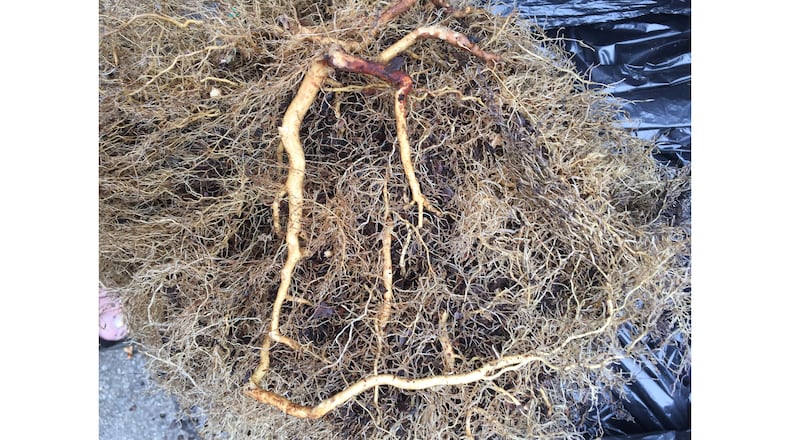Q: The very cold weather at the first of the year killed some limbs on my fig trees. When is the best time to remove the dead limbs? Eddie Dillard, Atlanta
A: Dead limbs can be removed at any time of the year. But the additional decisions you make now will affect your fig crop next year. The remaining limbs on your bush should have lots of leaves and fruit now in August (early fruiting varieties might have already had ripe fruit). If you don’t see this vigorous growth, then these limbs should be removed as well. They were partially frozen and will never produce well. If you see weak growth all over, it’s not inconceivable that your fig will need to be cut to the ground. But your fig is not yet dead. You’ll have a big root system left. It will be ready to fuel rapid growth next spring, with lots of figs to follow.
Q: What on earth are these zillions of little brown droppings that are falling from our trees? They’ve been falling for about a week now, covering much of the deck with messy stuff that sticks to your shoes, and when rained upon turns to a mushy mud. Anything we can do to stop it? Karen Kelley, east Cobb
A: The first thing to do is to cancel any parties you might plan involving the deck. The brown particles are the droppings of oak caterpillars living in the tree, gorging on leaves, and discharging the aftermath onto your deck. At night, you can sometimes hear what sounds like a light rain, but it’s not water; it’s caterpillar dung falling on the leaves. There’s nothing you can do about it. The tree is likely too tall to spray, and it can take a long time for systemic insecticides to go to the leaves. Fortunately, the caterpillars are only there for a few weeks, and you can begin entertaining thereafter.
Q: I found purple fuzz covering one of my squash pods. Can you tell me what it is? Randall Walters, Douglasville
A: It is a baby squash that did not get enough pollen to develop; it simply rotted in place. Seeds send out hormones that signal a fruit (which squash is) to form pulp around themselves. Sometimes, you’ll get a squash that has barely gotten enough pollen to pollinate all of the seeds. They will usually be long and misshapen. The best cure is to plant flowers that pollinators like each year among your squash. The insects will be attracted to your squash flowers to ensure the best pollination possible.
Email Walter at georgiagardener@yahoo.com. Listen to his occasional garden comments on “Green and Growing with Ashley Frasca” Saturday mornings on 95.5 WSB. Visit his website, www.walterreeves.com, or join his Facebook page at bit.ly/georgiagardener for his latest tips.
About the Author
The Latest
Featured

